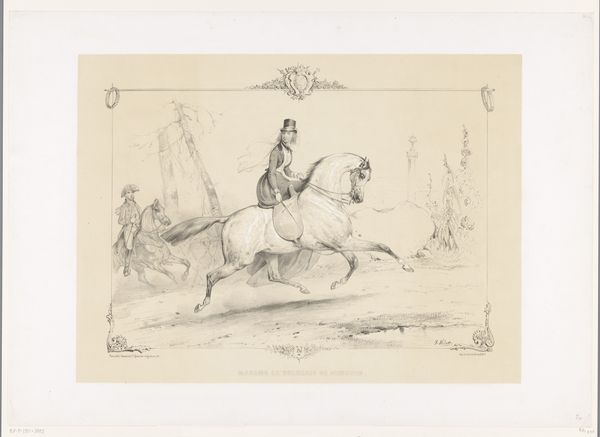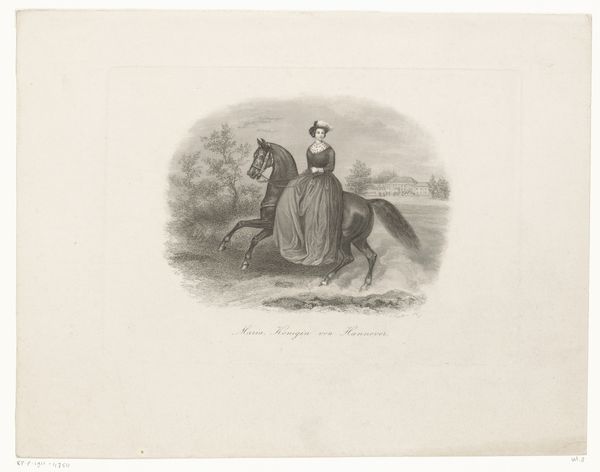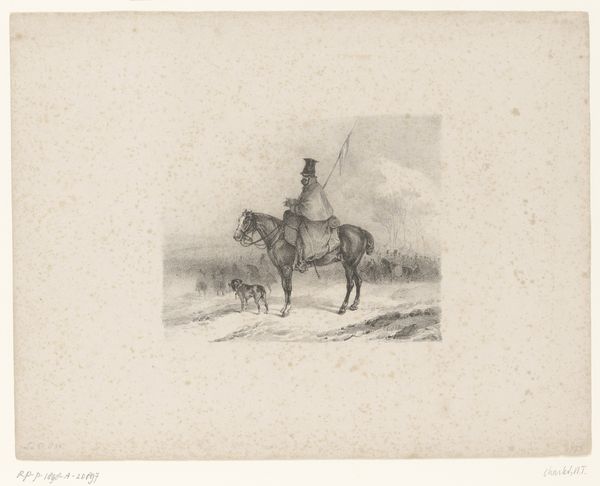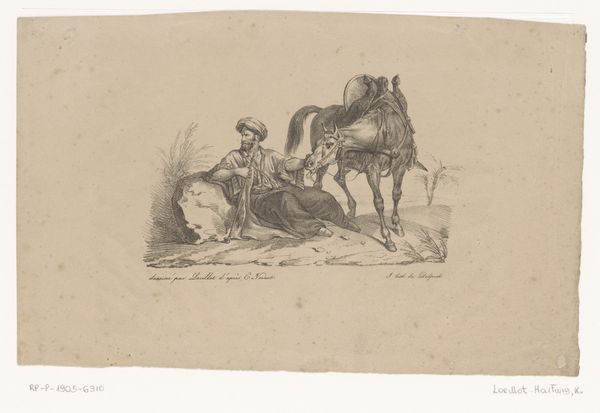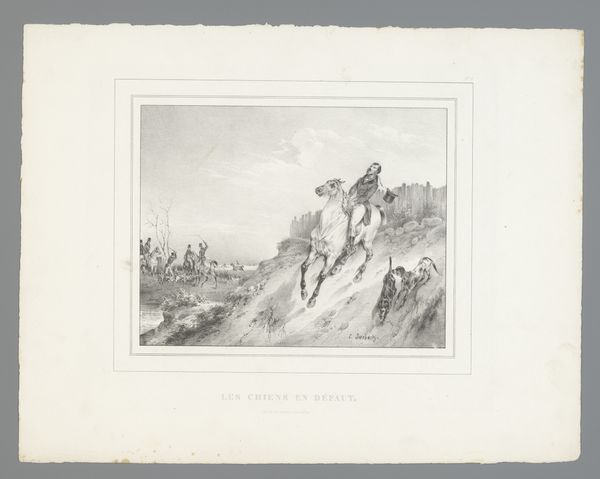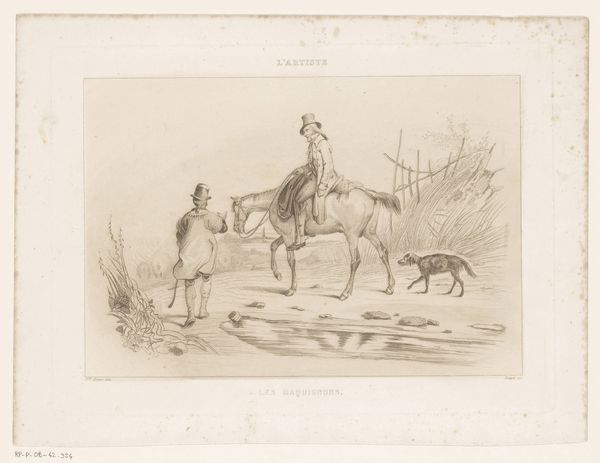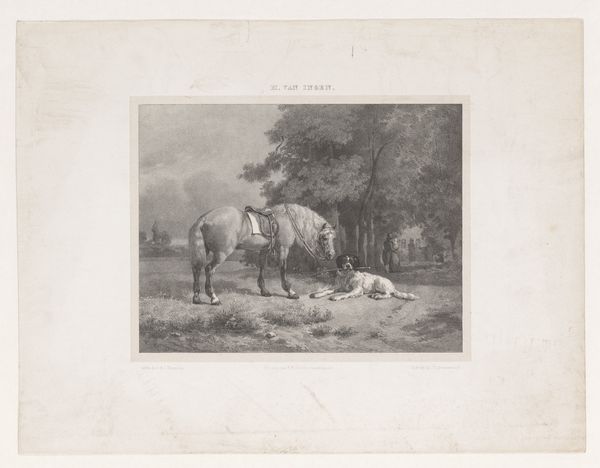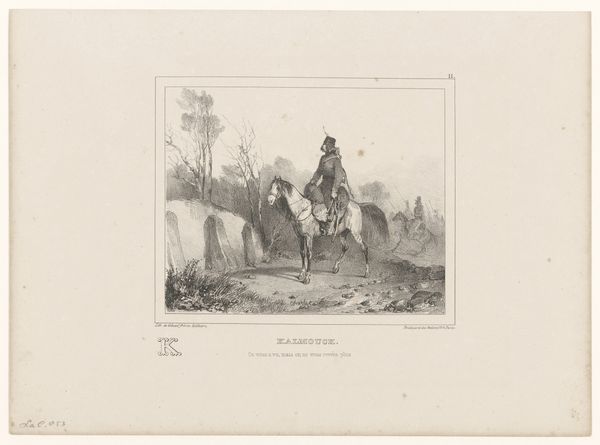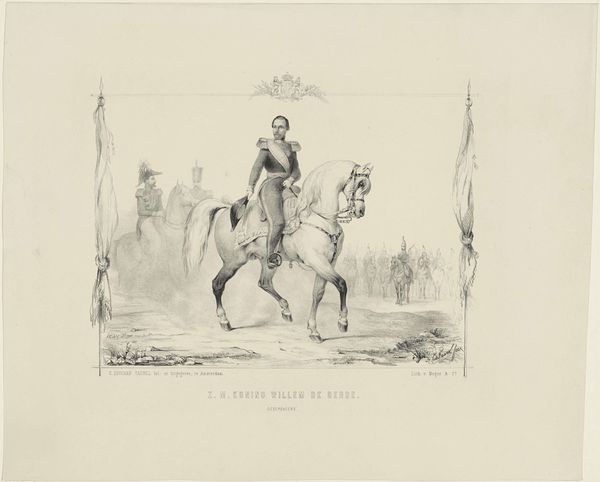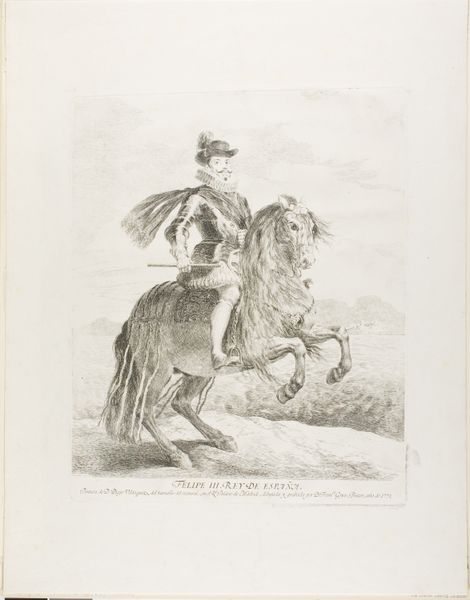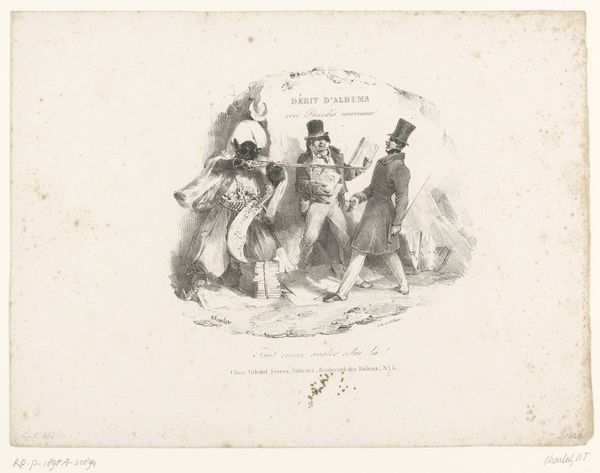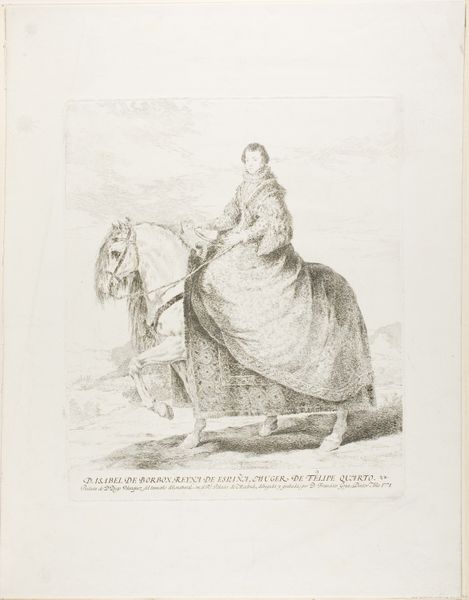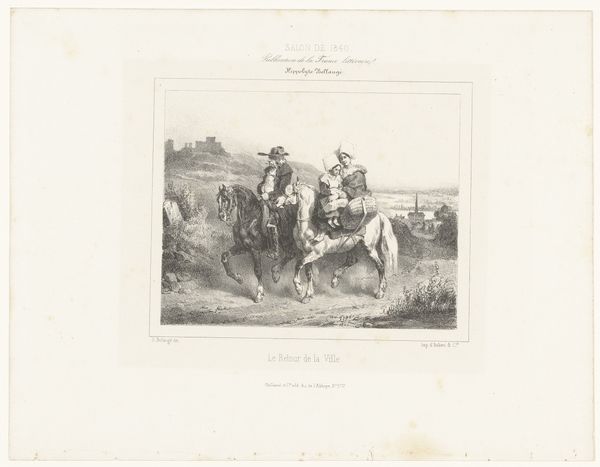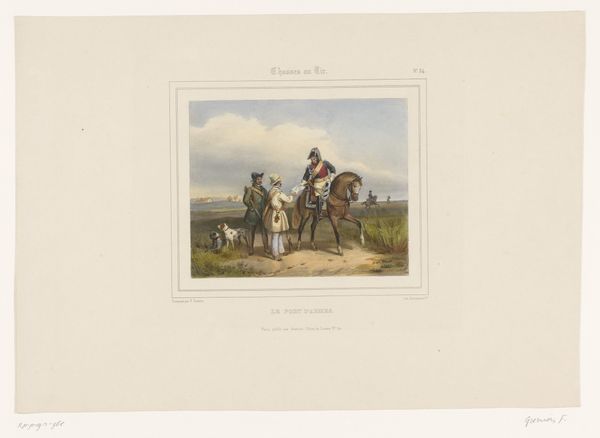
drawing, pencil
#
portrait
#
drawing
#
imaginative character sketch
#
toned paper
#
light pencil work
#
pencil sketch
#
landscape
#
personal sketchbook
#
romanticism
#
pencil
#
ink colored
#
sketchbook drawing
#
pencil work
#
watercolour illustration
#
sketchbook art
#
erotic-art
Dimensions: height 225 mm, width 287 mm
Copyright: Rijks Museum: Open Domain
Curator: Here we see a work titled *Portret van Helene van Mecklenburg-Schwerin te paard*, or *Portrait of Helene van Mecklenburg-Schwerin on Horseback*, which was created after 1811. It resides here at the Rijksmuseum. The artist is anonymous. It's made using pencil on toned paper. What strikes you about it? Editor: Well, there's a distinct feeling of power, isn’t there? It’s a soft drawing in a way, but the image of a woman on a rearing horse... It's imposing. Considering the societal constraints placed on women at this time, this representation is fairly subversive. Curator: Indeed. Equestrian portraits, particularly those of women, often carried symbolic weight. The horse represents not only status but also control, both literally and metaphorically. Think about how historical narratives have portrayed female leaders. Editor: Exactly! It's about displaying dominion, staking a claim to a type of authority otherwise forbidden. We need to consider, though, who commissioned this portrait and for what purpose. Was this an image designed to promote Helene, or something else? How would she have been perceived because of this type of imagery? Curator: The imagery here is very Romantic, echoing classical ideals. The swirling lines give the composition a strong dynamism. The use of toned paper enhances the subtleties of the light, adding to the drama. Even the landscape in the background appears to bow before her. Editor: That dynamism certainly complicates matters. While she presents this figure of aristocratic power, a kind of "freedom," that doesn’t necessarily mean emancipation for all women, or all people. It probably solidified class lines as well. Curator: Of course. We are seeing the embodiment of aristocratic privilege. This makes this anonymous artist and the portrait subject both rather fascinating in their potential social statements. The pencil sketch aesthetic suggests perhaps this was more for personal enjoyment. Editor: Yes, something more private, an exploration of identity in the domestic sphere perhaps? Either way, this piece offers us a fascinating glimpse into the performance of power, class, and gender at the time. Curator: Absolutely. And perhaps a small visual stone towards re-evaluation of symbolism itself.
Comments
No comments
Be the first to comment and join the conversation on the ultimate creative platform.
